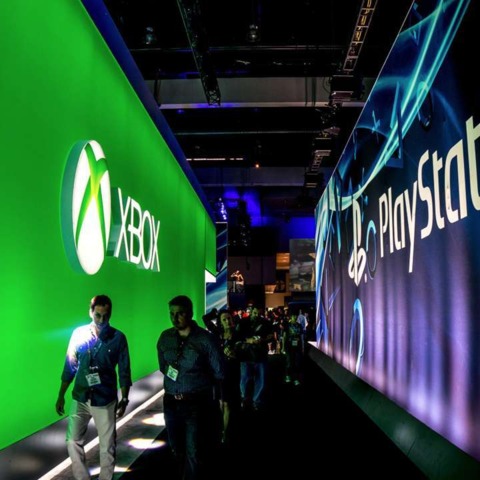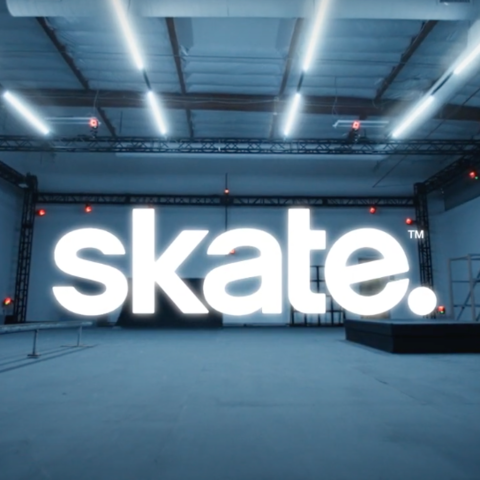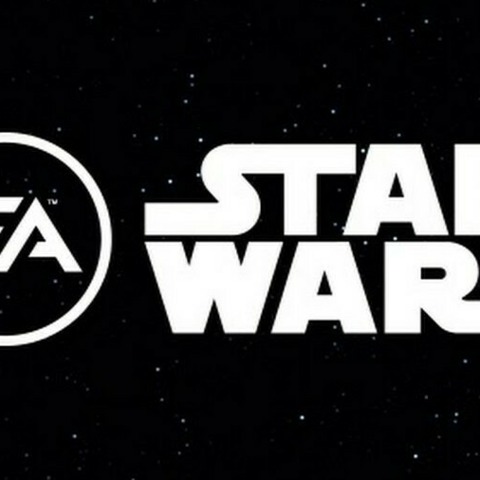Hearthstone's next expansion, Scholomance Academy, is releasing in early August. The new set will introduce 135 new cards including 40 new "Dual-Class" cards, a new Spellburst mechanic, and more. Dual-Class cards combine two classes split down the middle, and each class will be paired with two others. Spellburst, meanwhile, triggers an effect if you have a Spellburst minion in play the first time you cast a spell.
GameSpot spoke with game designers Chadd Nervig and Liv Breeden about the upcoming set, the new normal for how the company is approaching balance adjustments, and how an unused Demon Hunter power from Ashes of Outland helped create the new Spellburst in this set.
The last expansion [Ashes of Outland] was very grim and dark and metal. This one is a lot more lighthearted and kind of cute. When you're deciding the order of expansions, how much do you consider what came before and what's coming after to strike a balance?
Chadd Nervig: We definitely do keep that in mind. In general, Hearthstone tends to aim for whimsy and charm. Ashes of Outland was one of our darker sets, and this lightened things up. There's still, "What is Kel'thuzad doing in the basement?" There's still some darker undertones here and there.
Liv Breeden: I think the benefit of switching it up is it doesn't create a new normal. If it's just dark all the time, it starts to feel really sad and it's not really Hearthstone anymore. But if we're doing only the happy, excited sets, then they just feel the same. It's good to have that balance of up and down between really dark and very light. That way you can play with the differences.
Dual-Class Cards
You mentioned the "dual majors," dual class cards. From a visual design standpoint, they've got a unique look for Hearthstone cards, split down the middle. That's a different way of signifying the duality of it than how you marked it with Gadgetzan.
Nervig: Yeah, Gadgetzan's were a little different. Those were these three factions within Gadgetzan that those tri-class cards were themed after, and they had their own specific mechanics. These are explicitly dual-class, themed after the combination of those classes. Each dual-class represents a course that you could take at Scholomance Academy. For example, the Illusions course is taken by both the Mages and Rogues. You see different mechanics and on those cards that form the overlap between those.

Breeden: Gadgetzan is very much a "What faction do you belong to? What is the banner that you hold?" This really is "What makes these two classes special?" I think when you look at it, what's the best way to do that? What's the best way to show that this card is not like this other faction, it is really a Rogue card, but it's also really a Mage card.
Nervig: There's also a related thing here. We made these new card frames to visually show you the different colors of the cards, to show off the different classes. But we also took a look at the weapon frame. [The existing weapon frame] doesn't really clearly show what class it belongs to. "What class is this weapon?" has been a really common feedback point. At the same time, doing these new card frames, we also revamped the weapon frames. You can clearly see the class on all weapons now.
"'What class is this weapon?' has been a really common feedback point. ... We revamped the weapon frames. You can clearly see the class on all weapons now."
You've been a lot more open in recent months talking about class identity. That's something that needs to be clearly established before you make an expansion like this, where you mash up different classes by what they have in common.
Nervig: Class identity has been a major focus for us for a couple years now. The dual-classes are interesting in that, at first glance, you might think that blurs class identity. Really, the point of class identity is thinking about what the class' capabilities are. How they do the thing is often flavorful. It doesn't make what you expect a Mage to be able to do, it doesn't violate that by letting them have a combo card. We get to use the mechanics from both sides. You're not going to see Priest get a bunch of card draw through the dual class cards.
Breeden: It really made it a lot easier because we had just recently done the class identity stuff. We've got this sheet that says, "What are these classes good at? What are they bad at?" And then we were able to reference that, and be like, "Okay, so what works in this circle?" It is a complete circle of every class bleeds into two other classes. But it also means that we can do really interesting things, too. Druid and Hunter both do beasts, so in the crossover of the classes, it's about beasts. But how they do beasts is very different. You can just look at Hunter beasts in general, they're very swarmy, but Druid beasts are huge.
Was it any different finding matches for Demon Hunter, since it's so new and it's not quite as established?
Breeden: Demon Hunter is quite new, but a lot of these matches are flavor and mechanical focused. The Demon Hunter and Hunter matchup, I mean, come on.
Nervig: It could have gone to Demon Hunter/Rogue, for example. There's an overlap there as well that we could have pulled from. We ended up going Demon Hunter to Warlock.
One dual-class card, Devolving Missiles, is a mashup of two popular cards. Was that often the spark of design?
Nervig: Absolutely. That sort of thing happened, at least at the starting point, a lot of the time. Lightning Bloom is basically Innervate, back when it was extremely overpowered. Now, can we do that, but offset that with the overload mechanic. That's kind of neat. It's like stealing two Mana from next turn in order to do a crazy thing this turn.
Breeden: We also leaned into the Demon Hunter/Warlock as one of the new mechanics. They've got a mechanic for their soul magic which is exclusive to just them, just this set. It's super cool, because we can explore new spaces.

The Transfer Student has different effects based on the board. Is there a plan to continue adding new effects as you add more boards?
Breeden: Our plan is that we'll update it while it's still in Standard, and when it rotates out, it'll be a "Discover card from this card set."
How Demon Hunter Influenced Spellburst
What was the origin of the Spellburst mechanic?
Nervig: We wanted to have a mechanic that really fits the fantasy here of, you're at Scholomance Academy, this is a place all about learning magic. We experimented with things like when you cast a spell, this happens. By making it a one-time effect, something not repeatable, lets us expand out to do a whole lot of different designs with it, not just things that can scale infinitely. We get some really interesting stuff, too, like the Goody Two-Shields. You probably don't want to cast a spell right after playing her. You want to let your Divine Shield get used up, then cast a spell, probably the next turn.
"We tried Bloodthirst in the previous set with Demon Hunter. While we didn't keep that, we did really like the one-time trigger."
Breeden: We tried Bloodthirst in the previous set with Demon Hunter. We wanted to do something really aggressive. We had a one-time trigger when your opponent takes damage. You play these cards, then you hit him in the face, then your Bloodthirst trigger would go off. We played around with that for the Demon Hunter before we settled on Outcast. It pushed him into this extremely narrow space, where this was all they did was go face.
While we didn't keep that, we did really like the one-time trigger part. It creates this really interesting game dynamic where it's not just Battlecry, it's sometime later. There's more gameplay to it than just playing my cards. I have to play other cards, or I have to make decisions. It's really skill-testing in when I do it, what spell do I use, how do I construct my deck to make use of this. I think iterating on Bloodthirst to come up with Spellburst really shows that one-time triggers are really exciting, and we might do even more in the future.

Rapid-Response Balance Adjustments
When unveiling Ashes of Outland, in interviews, Blizzard said it consciously made Demon Hunter cards a little higher on the power scale than usual, because it was so new. In the months since have been nerfs, nerfs, nerfs. Is the team still making Demon Hunter cards a tinge stronger?
Nervig: Our goal for Demon Hunter was always to be that they are competitive with the other classes. We also knew that this is a brand-new class, and a whole lot of what we know about balancing classes or balancing cards relies on this existing knowledge about how a class plays, what their expectations are, how they interact with the other classes, that sort of thing. We didn't have that strong base of knowledge yet with Demon Hunter, because it's brand new, and internal testing can only show us so much.
We knew going into it that, realistically speaking, the chances were high that we would need to make balance adjustments. So we prepared for that, and we took a different, more ready to quickly react and make changes approach to balance, starting with Ashes of Outland. I think the results there speak for themselves.
Are you going to be as prepared and agile to make quick changes, not necessarily only to Demon Hunter? Is that the philosophy going forward?
Nervig: I think this new philosophy has been working really well for us. Keeping things lively, keeping things new and fresh is really important for us. I wouldn't expect quite the same level, but we're ready. We're able to make changes quickly.
"Keeping things lively, keeping things new and fresh is really important for us. I wouldn't expect quite the same level, but we're ready. We're able to make changes quickly."
Breeden: We like to experiment with different release schedules. We tried something really different with our patching schedule as well, for balances. Feedback's been really positive. I think that's the best way the community can show us that they like something, is to provide positive feedback. I think this expansion shows that every single time we talk to people or have interviews, people are mentioning how positive the rate at which we are fixing and adjusting things is being received.
The only criticism I've even heard of the patches recently was just how close this next set of nerfs is coming to the Masters Tour tournament. Was that a consideration when planning out this next one?
Nervig: We try to keep esports in mind. It is really important to us. In this case, this patch is coming out coinciding with the announcement, so there's not a whole lot of flexibility there. Because of the proximity to the Masters Tour, we could early announce what the changes are going to be, so that players can start adjusting their decks based on that, or making predictions, or at least just thinking about it, giving them more time to think about it. The fact that Masters Tour is still close was definitely a contributing factor to why we announced the changes before actually making them.



















